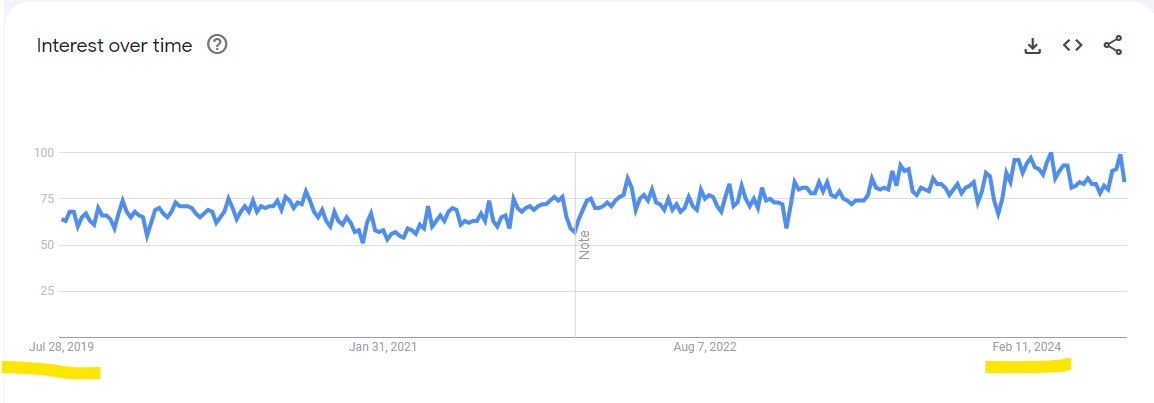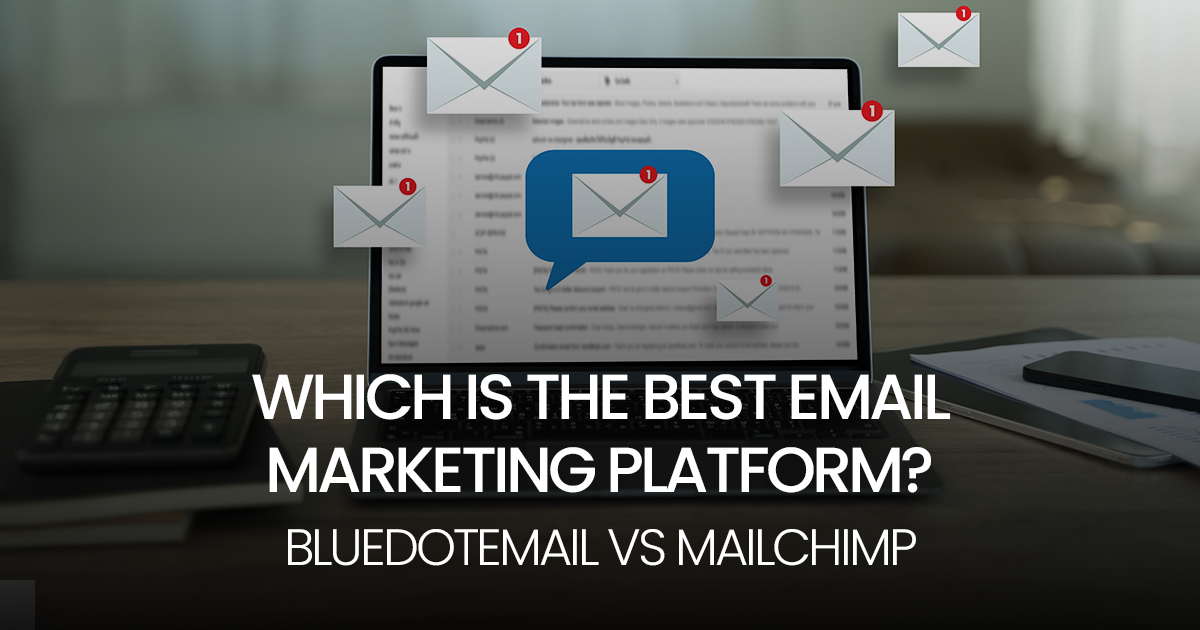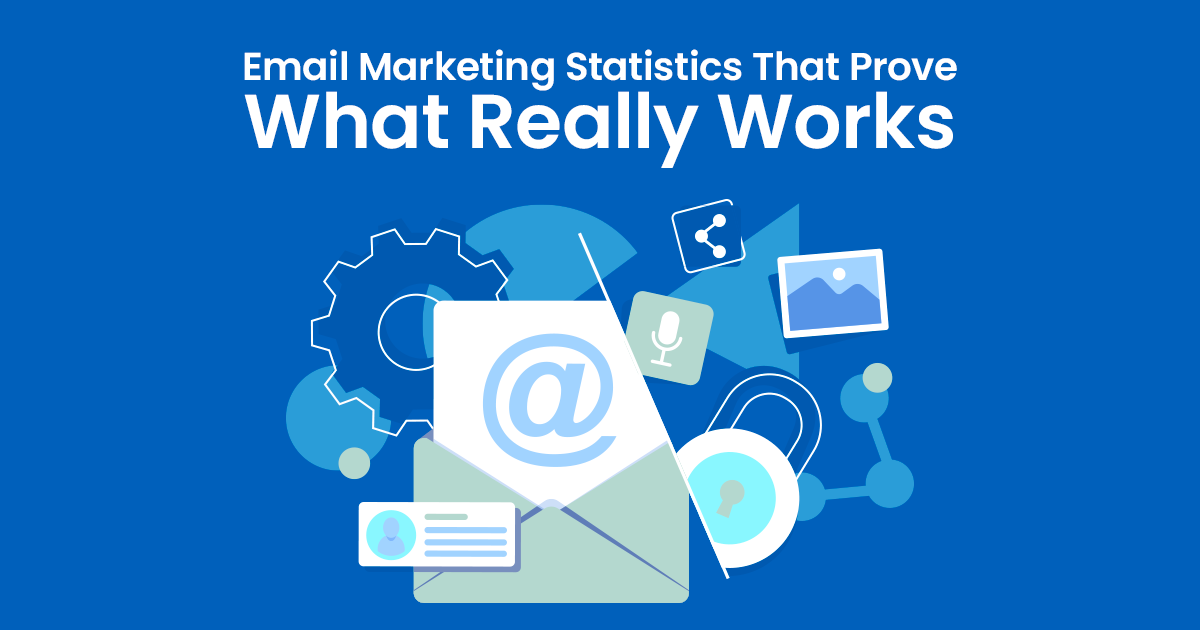One question seems to linger persistently: is email marketing dead?
Despite the rise of social media, chatbots, and other digital channels, email marketing remains important.
Let’s dive deep into the nuances to uncover why the death knell for email marketing is premature backed by stats.
Is Email Marketing Dead in 2024?
Email marketing, often dismissed as antiquated, continues to wield significant influence.
In 2024, email marketing serves not just as a communication tool but a strategic asset for businesses worldwide.
Far from being obsolete, it has adapted and evolved, integrating sophisticated analytics and personalization.
People do check their email inboxes far more frequently than their physical mailboxes.
By 2024, email marketing revenue was expected to exceed 9.5 billion U.S. dollars.
Few other marketing channels can rival its impressive return on investment (ROI).
In a late 2023 survey, over half of the marketing professionals surveyed reported a 100 percent improvement in their email marketing campaigns’ ROI, underscoring why email has remained a dominant force since its inception in the 1970s.
Source: Statista

Source: Google Trends
Debunking the Myth: Email Marketing Is Dead
Challenging Misconceptions
“Email marketing is not dead?” This question echoes across marketing forums and blogs, yet the data speaks volumes.
Contrary to popular belief, email marketing thrives due to its unparalleled ROI and scalability.
The Numbers Speak: Is Email Marketing Still Effective?
Statistically, email marketing boasts a staggering ROI, averaging $42 for every dollar spent.
This figure underscores its financial viability and enduring relevance in modern marketing strategies.
How Many People Actually Respond to Email Marketing?
Email remains a preferred mode of communication for business updates and promotions.
Studies reveal that an impressive percentage of consumers actively engage with email marketing campaigns, indicating its efficacy in driving consumer action.
In a 2023 survey conducted among marketers in various countries, newsletters emerged as the most popular type of email marketing campaign.
About 16.8 percent of professionals sent newsletters to existing and potential customers.
Promotional email campaigns were a close second, with 15.3% of marketers using them for their marketing efforts.
Addressing Concerns: Is Email Marketing Dying?
“Is email marketing still effective in the age of social media?”
While newer platforms emerge, email’s direct, personalized approach remains unmatched.
Its adaptability to mobile and evolving consumer behaviour ensures continued relevance.
Understanding what causes 30% of email users to unsubscribe on mobile devices sheds light on optimization strategies.
Responsive design and relevant content are crucial to sustaining engagement and minimizing churn.
In a December 2019 survey of adult consumers in the United Kingdom (UK), 57% of respondents reported unsubscribing from marketing emails due to receiving too many from a particular brand, shop, or site.
20% indicated they unsubscribed because of a bad customer experience.
Is Email Marketing Profitable?
Industry leaders affirm email marketing’s profitability through case studies and success metrics.
From startups to multinational corporations, its ability to nurture leads and drive conversions remains pivotal in achieving marketing goals.
In a 2023 survey of marketers from various countries, the primary objectives of their email marketing campaigns were product awareness and promotions, with 16% of respondents selecting these goals.
Retention and newsletters were the next most common objectives, each cited by 14.6% of respondents.
Is Email Marketing Dead – Reddit Perspective
On Reddit, the debate over whether email marketing is not dead stats rages on.
Many users argue that is email dead but has evolved.
They highlight why email marketing is not effective, citing personal experiences with low ROI and engagement rates.
Critics, however, feel bombarded by excessive emails and suggest shifting focus to newer platforms.
Is email marketing dead or alive?
byu/gowithhusni indigital_marketing
Despite mixed opinions, the consensus leans towards email marketing’s adaptability and profitability, proving that it’s far from obsolete in the digital age.
Redditors agree that, with the right strategies, email marketing remains a valuable tool.
Challenges Facing Email Marketing And How to Fix?
From compliance issues to evolving consumer behaviors, let’s explore the key hurdles in email marketing today.
CAN-SPAM Act
One of the primary challenges in email marketing is ensuring compliance with regulations like the CAN-SPAM Act.
Enacted in 2003, the CAN-SPAM Act sets the rules for commercial email, establishing requirements for commercial messages and giving recipients the right to have emails stopped from being sent to them.
Here are some key points:
Clear Identification
Emails must clearly state that they are advertisements.
Accurate Information
The “From,” “To,” and routing information must be accurate and identify the person or business who sent the email.
Subject Line Transparency
Subject lines must not be deceptive and should accurately reflect the content of the email.
Opt-Out Mechanism
Every email must include a clear and conspicuous way for recipients to soft opti-in and opt-out of receiving future emails.
Timely Processing
Opt-out requests must be honored promptly within 10 business days.
GDPR and International Compliance
GDPR requires marketers to obtain explicit consent from EU residents before sending emails and allows individuals to access and control their personal data. This means:
Consent Management
Marketers must ensure they have explicit consent from recipients.
Data Protection
Personal data must be securely stored and processed.
Right to Withdraw
Recipients have the right to withdraw consent at any time, and marketers must respect this immediately.
Deliverability Issues
Spam Filters
Email deliverability is a challenge, with spam filters becoming more vigilant.
Emails can be filtered out or marked as spam due to:
Poor Sender Reputation
Sending emails from a suspicious domain or IP address.
Content Triggers
Using words and phrases that trigger spam filters.
Maintaining a Healthy Subscriber List
To improve deliverability, marketers must maintain a clean and engaged subscriber list. This involves:
Regular List Cleaning
Removing inactive subscribers and invalid email addresses.
Mobile Optimization
With a significant portion of emails being opened on mobile devices, optimizing email content for mobile is essential.
Why Email Marketing is Not Dead – Conclusion
Compliance with regulations like the CAN-SPAM Act and GDPR, improving deliverability, adapting to evolving consumer preferences.
By addressing these challenges head-on, marketers can leverage email to its fullest potential and achieve their marketing goals.
Email Marketing is Dead – FAQs
What steps can I take to improve email deliverability?
Improve deliverability by maintaining a healthy subscriber list, avoiding spam triggers, and regularly monitoring key metrics such as bounce rates and spam complaints.
Why is mobile optimization important for email marketing?
With many users accessing emails on mobile devices, optimizing for mobile ensures a better user experience, leading to higher engagement rates and conversions.
Why email marketing is dead? Why do some people believe?
Misconceptions arise from overlooking its adaptability and proven success metrics in modern marketing contexts.
How many people actually respond to architecture email marketing?
The response rate for architecture email marketing can vary, but on average, open rates hover around 25%, with click-through rates ranging between 3-5%.
Is email marketing going away for startups and SMEs?
is email marketing dying? Not really. It remains a cost-effective channel for startups and SMEs.
Is email marketing declining for Enterprise?
is email dead for enterprise? Not at all. It remains a highly effective channel.
Is there a future for email marketing financial services?
Yes, email marketing has a strong future in financial services. It remains an effective way to engage clients with personalized financial advice, updates, and promotions while maintaining compliance with regulations.
Relevant Guides And Tools
How Much to Charge for Email Marketing Freelance
How Can Email Marketing Fuel Your Overall Inbound Strategy








